Cyclohexanecarboxylic acid chloride
Synonym(s):Cyclohexanecarboxylic acid chloride;Hexahydrobenzoyl chloride
- CAS NO.:2719-27-9
- Empirical Formula: C7H11ClO
- Molecular Weight: 146.61
- MDL number: MFCD00001456
- EINECS: 220-322-7
- SAFETY DATA SHEET (SDS)
- Update Date: 2025-09-25 17:15:13
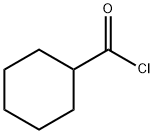
What is Cyclohexanecarboxylic acid chloride?
Chemical properties
clear colourless to straw coloured liquid
The Uses of Cyclohexanecarboxylic acid chloride
Cyclohexanecarbonyl chloride is used in the preparation of five thiourea derivative ligands having anti-bacterial and anti-yeast activity, (N-(diethylcarbamothioyl)cyclohexanecarboxamide, N-(di-n-propylcarbamothioyl)cyclohexanecarboxamide, di-n-butylcarbamothioyl)cyclohexanecarboxamide, N-(diphenylcarbamothioyl)cyclohexanecarboxamide, N-(morpholine-4-carbonothioyl)cyclohexanecarboxamide.
What are the applications of Application
Cyclohexanecarbonyl chloride is an acid chloride useful in synthesis reactions
General Description
Electrochemical reduction of cyclohexanecarbonyl chloride at a hanging mercury drop electrode in acetonitrile has been reported.
Properties of Cyclohexanecarboxylic acid chloride
| Boiling point: | 184 °C (lit.) |
| Density | 1.096 g/mL at 25 °C (lit.) |
| refractive index | n |
| Flash point: | 152 °F |
| storage temp. | Store below +30°C. |
| form | Liquid |
| color | Clear colorless to straw |
| Specific Gravity | 1.096 |
| Water Solubility | HYDROLYSES |
| Sensitive | Moisture Sensitive |
| BRN | 742163 |
| CAS DataBase Reference | 2719-27-9(CAS DataBase Reference) |
| NIST Chemistry Reference | Cyclohexanecarbonyl chloride(2719-27-9) |
| EPA Substance Registry System | Cyclohexanecarbonyl chloride (2719-27-9) |
Safety information for Cyclohexanecarboxylic acid chloride
| Signal word | Danger |
| Pictogram(s) |
 Corrosion Corrosives GHS05  Exclamation Mark Irritant GHS07 |
| GHS Hazard Statements |
H302:Acute toxicity,oral H314:Skin corrosion/irritation H335:Specific target organ toxicity, single exposure;Respiratory tract irritation |
| Precautionary Statement Codes |
P261:Avoid breathing dust/fume/gas/mist/vapours/spray. P270:Do not eat, drink or smoke when using this product. P280:Wear protective gloves/protective clothing/eye protection/face protection. P301+P312:IF SWALLOWED: call a POISON CENTER or doctor/physician IF you feel unwell. P303+P361+P353:IF ON SKIN (or hair): Remove/Take off Immediately all contaminated clothing. Rinse SKIN with water/shower. P305+P351+P338:IF IN EYES: Rinse cautiously with water for several minutes. Remove contact lenses, if present and easy to do. Continuerinsing. |
Computed Descriptors for Cyclohexanecarboxylic acid chloride
| InChIKey | RVOJTCZRIKWHDX-UHFFFAOYSA-N |
Cyclohexanecarboxylic acid chloride manufacturer
New Products
Indole Methyl Resin tert-butyl 9-methoxy-3-azaspiro[5.5]undecane-3-carboxylate Boc-His(Boc)-OH 2-CTC Resin 4-Chloro-7-tosy1-7Hpyrrolo[2,3-d]pyrimidine 5,7-Dibromo-1H-indole 2,5-dichloro-N-hydroxy-4,6-dimethylpyridine-3-carboximidamide 2,2-Dimethoxy-7-azaspiro[3.5]nonane hydrochloride 4-chloromethyl-5-methyl-1,3-dioxol-2-one (DMDO-Cl) R-2-BENZYLOXY PROPIONIC ACID 1,1’-CARBONYLDIIMIDAZOLE 1,1’-CARBONYLDI (1,2-4 TRIAZOLE) N-METHYL INDAZOLE-3-CARBOXYLIC ACID 4-((2-hydroxyethyl)thio)benzoic acid 1-(TERT-BUTOXYCARBONYL)-2-PYRROLIDINONE Methyl 6-methylnicotinate 3-Pyridineacrylic acid tert-Butyl carbazate TETRAHYDRO-2H-PYRAN-3-OL 2-((4-morpholinophenylamino) (methylthio) methylene) malononitrile 3-(4-morpholinophenylamino)-5-amino-1H-pyrazole-4-carbonitrile 2,4-dihydroxybenzaldehyde 1,3-Diethyl-1,3-Diphenylurea Methyl 2-methylquinoline-6-carboxylateRelated products of tetrahydrofuran
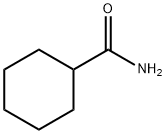


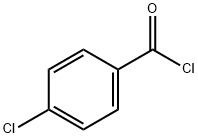

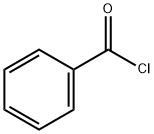

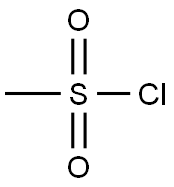
You may like
-
 2719-27-9 Cyclohexanecarbonyl Chloride 99%View Details
2719-27-9 Cyclohexanecarbonyl Chloride 99%View Details
2719-27-9 -
 2719-27-9 99%View Details
2719-27-9 99%View Details
2719-27-9 -
 Cyclohexanecarbonyl chloride 98%View Details
Cyclohexanecarbonyl chloride 98%View Details
2719-27-9 -
 Cyclohexanecarbonyl chloride CAS 2719-27-9View Details
Cyclohexanecarbonyl chloride CAS 2719-27-9View Details
2719-27-9 -
 Cyclohexanecarbonyl Chloride CAS 2719-27-9View Details
Cyclohexanecarbonyl Chloride CAS 2719-27-9View Details
2719-27-9 -
 Cyclohexanecarboxylic acid chloride CAS 2719-27-9View Details
Cyclohexanecarboxylic acid chloride CAS 2719-27-9View Details
2719-27-9 -
 Cyclohexanecarbonyl chloride CAS 2719-27-9View Details
Cyclohexanecarbonyl chloride CAS 2719-27-9View Details
2719-27-9 -
 Thiourea 99% ARView Details
Thiourea 99% ARView Details
62-56-6
Statement: All products displayed on this website are only used for non medical purposes such as industrial applications or scientific research, and cannot be used for clinical diagnosis or treatment of humans or animals. They are not medicinal or edible.
